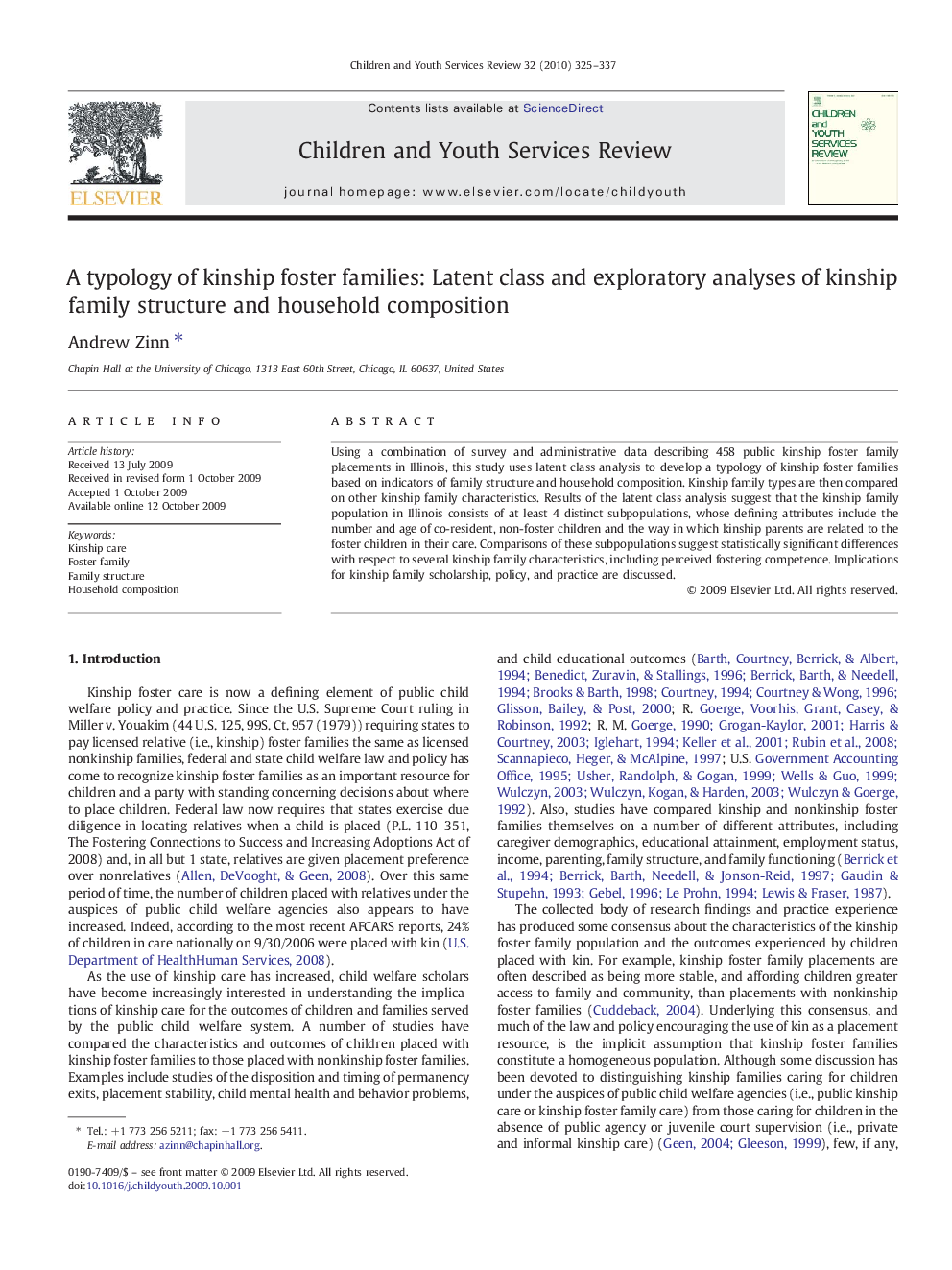| Article ID | Journal | Published Year | Pages | File Type |
|---|---|---|---|---|
| 347527 | Children and Youth Services Review | 2010 | 13 Pages |
Using a combination of survey and administrative data describing 458 public kinship foster family placements in Illinois, this study uses latent class analysis to develop a typology of kinship foster families based on indicators of family structure and household composition. Kinship family types are then compared on other kinship family characteristics. Results of the latent class analysis suggest that the kinship family population in Illinois consists of at least 4 distinct subpopulations, whose defining attributes include the number and age of co-resident, non-foster children and the way in which kinship parents are related to the foster children in their care. Comparisons of these subpopulations suggest statistically significant differences with respect to several kinship family characteristics, including perceived fostering competence. Implications for kinship family scholarship, policy, and practice are discussed.
